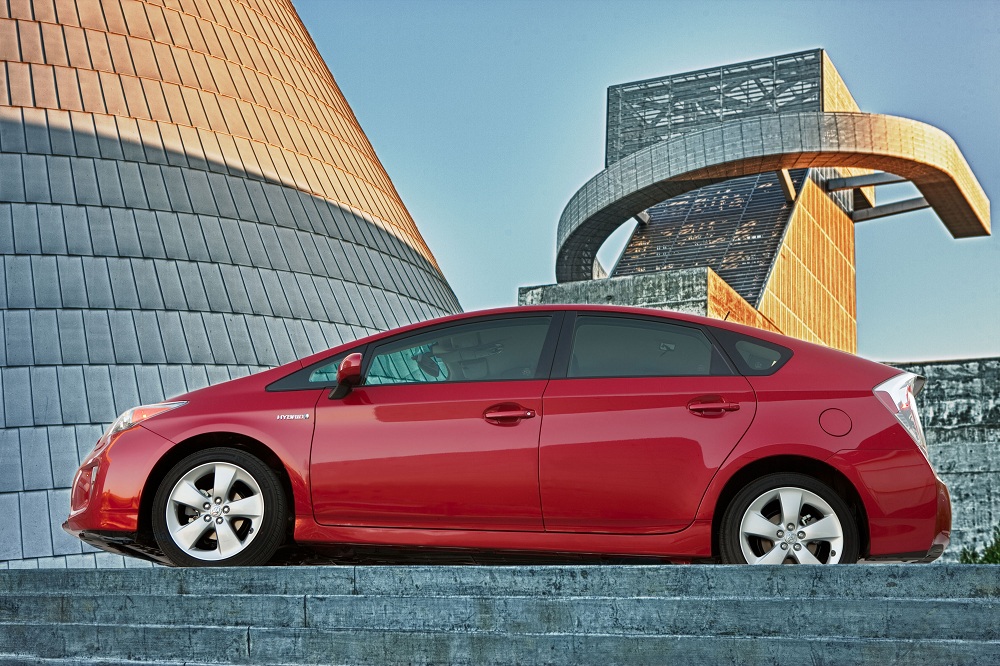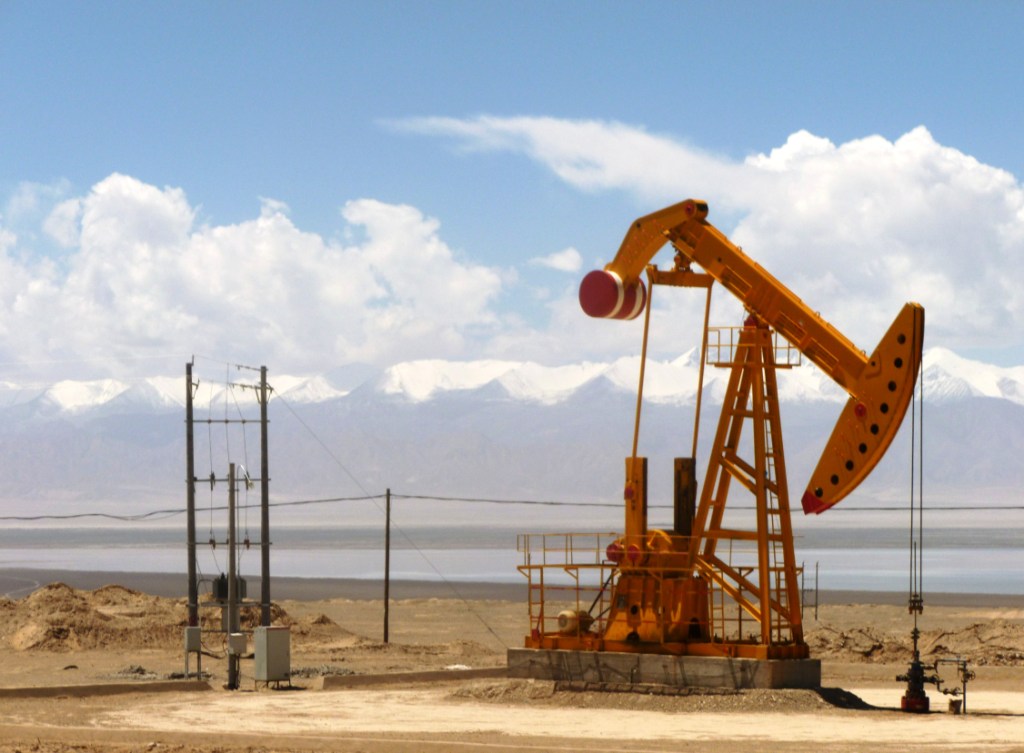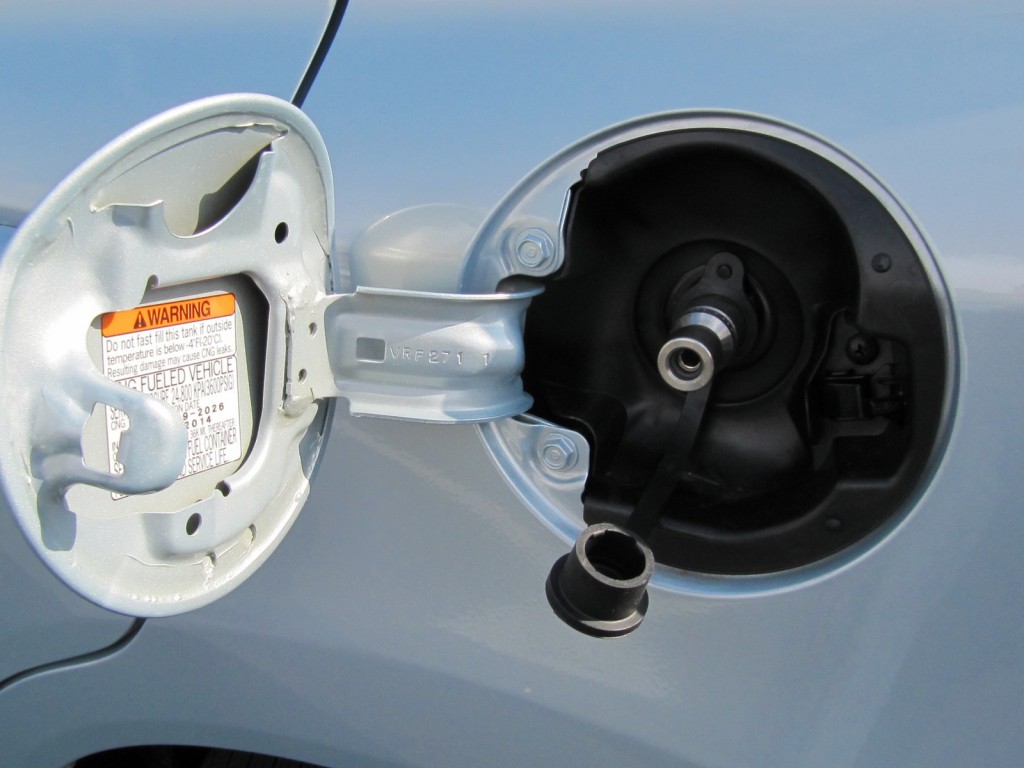
Gas pump
Yep, Big Oil is definitely scheming and plotting to destroy the electric car. Everyone knows that. Right?
[sigh] Time for more mythbusting, it seems.
The surprising success of our first debunking of five green-car myths led us to look at five more relatively common ideas and explain ... well, as they say: NOT.
MORE: Five Big Myths About Green Cars And Gas Mileage, Debunked
Some are about saving money on gasoline, others are more general in nature. They come from our readers and from articles we've read that propound rather, errrr, creative ways of looking at green cars, vehicles in general, the auto industry in specific, and the world energy industry.
Here we go.

2012, 2013, and 2014 Toyota Prius
(1) Any green or high-MPG car will save you money.
This is often the case, but it's far from universally true. It's the flipside of the notion that high-efficiency cars cost so much more than comparable gasoline cars that you'll never make back the additional cost.
Both notions require you to combine the initial costs and difference in gas mileage--or cost-per-mile for plug-in electric cars--with your assumptions about how long you will own the car and what will happen to the price of gasoline.
If you compare a 2014 Toyota Corolla LE Eco, at 35 mpg combined, to a 2014 Toyota Prius at 50 mpg, the additional cost for the Prius (using the base price of each model) is $5,500.
If you own the car for five years and drive 10,000 miles a year on $3-per-gallon gasoline, the Corolla will cost you $1,287 more in gas. So it saves you money against a Prius that costs $5,500 more.
On the other hand, since the Prius is technically a mid-size car, compare it to a 28-mpg non-hybrid 2014 Toyota Camry, at a price difference of just $1,725.
If you drive 15,000 miles a year on $4-per-gallon gasoline, and keep the car six years, the Camry costs you an extra $5,656. The Prius is a clear winner there.
In other words: You have to do the math.

2014 Chrysler 300
(2) Owning one vehicle is always cheaper than owning two.
Once more, it may be true, but it's not always the case--depending on your circumstances.
One brand-new but very inefficient car--an 18-mpg 2014 Chrysler 300 AWD with the 5.7-liter V-8 engine, for example--there are cases where a 50-mpg Prius Liftback and a 50-mpg Prius C subcompact could save you enough in gasoline to offset the second car payment.
If your household has to cover 25,000 miles a year--not unusual with long commutes--then using the pair of Priuses for five years will save you 889 gallons of gasoline a year. At $4 a gallon, that's $3,556 each year--or almost $300 a month.
Which could be enough to cover the $6,440 difference between the Chrysler ($36,840) and a Prius ($24,200) plus a Prius C ($19,080) over five years' worth of car payments, plus the insurance for that second car.
This is just one example; your own circumstances, mileage, and personal preferences will obviously play into the calculations.
But again, you have to do the math. (As Barbie notoriously said, "Math is hard!")

Oil well (photo by John Hill)
(3) Big Oil is working quietly and nefariously behind the scenes to kill plug-in electric cars and keep the world enslaved to petroleum transportation.
We tend not to believe in conspiracy theories here, but this crops up again and again and again: Despite the valiant efforts of electric-car advocates, Big Oil is working quietly behind the scenes to crush the very idea of plug-in electric cars and prevent them from coming to market altogether.
Sometimes the theory comes with the eager assistance of the world's car companies, who also want to keep their customers enslaved to gasoline.
Here's why it's not true.

Gas pump
Oil companies plan far, far into the future. And their analysts are paid enough to understand that carbon-emission limits in Europe, Asia, and elsewhere--and rising corporate average fuel economy (CAFE) rules in the U.S.--mean that new cars will get much, much more fuel-efficient.
That means that the current global fleet of 1 billion cars will consume less and less gasoline over time.
Moreover, that existing fleet of cars isn't likely suddenly to cover more miles, so any hope the oil companies have of demand increasing has to come from more cars.

Traffic in China
And, indeed, China and other parts of the developing world--think India, Brazil, and Russia--are eagerly snapping up cars. So much so, in fact, that by some estimates, the global fleet could double to 2 billion vehicles over the next 20 years.
But if new vehicles roughly double in efficiency over that period--and new vehicles cover the same miles each year as current ones do today--you end up with flat consumption of gasoline and diesel even with twice as many vehicles.
Oil companies know this.
They also know that the pace of improvement in battery technology is slow--about 7 percent per year--and that an entirely new infrastructure of cell-fabrication plants that doesn't exist today must be built if plug-in electric car volume is going to increase over time.
In chats with various executives in the oil and gas industries, the oil men (there are very few women) pretty much discount any noticeable impact on their business from plug-in electric cars for at least a couple of decades.
At that point, some of them suggest, oil will have become not only more expensive to extract, but more valuable as a feedstock for higher-value goods. In other words: plastics.

2012 Honda Civic Natural Gas, El Segundo, CA, Nov 2011
And the natural-gas folks? They seem far less interested selling fuel to millions of natural-gas private cars than in, first, converting the world's power plants from coal to natural gas. This is already happening.
Simultaneously, they might consider natural gas as a fuel for certain types of vehicles--replacing diesel for long-haul trucks, for example, or in large centralized work-truck fleets.
But oil companies spent 20 years getting out of the "downstream" business of distribution (i.e. gas stations), which they viewed as troublesome and low-margin.
It seems highly unlikely, for the same reason, that natural-gas companies would try to build the hundreds of thousands of retail fueling stations that would be needed globally.
Sure, some other enterprise might do so. But find a commodity sold to consumers on as widespread as gasoline or diesel whose global distribution network was built out recently.
The only one we can think of is Coca-Cola.
MORE: Electric Cars' Secret Advantage: They're Just Nicer To Drive
This is all pretty theoretical, of course, and we'll admit it's far from based on exhaustive research.
We're open to countervailing evidence, if anyone can demonstrate (with links, please) any current efforts by global oil companies to disrupt, delay, or otherwise impede the rollout of plug-in electric cars now well underway by Nissan, General Motors, Tesla, and the rest of the world's carmakers.
Like the oil and gas industry, global carmakers take a long view. They now know that some degree of electrification is inevitable. And the smart ones understand that as the price difference continues to fall, many consumers will prefer electric cars over gasoline cars.
Did we mention we tend to be skeptical about conspiracy theories?
(4) Solar-powered cars are just around the corner.
When we say "solar-powered cars," most people think of cars with solar panels on the roof. It's a lovely idea: Cars powered purely by sunlight.
The problem is that it would take many, many times the area of a car's sky-facing surfaces covered in solar panels to generate enough energy to recharge an electric car's battery pack, even under ideal circumstances.

Gas pump
While photovoltaic solar cells are steadily improving in efficiency and coming down in cost, they'd have to become one to two orders of magnitude more powerful than they are today to make a car covered in solar panels able to propel itself.
MORE: University Of Michigan Solar Car Takes Sun Power To New Extremes
Consider the Solar Challenge entrants, which are fascinating but flimsy contraptions covered in photovoltaic cells that can accelerate one very light human very slowly to about 30 mph under the intense sunlight of the Australian outback.

University of Michigan's World Solar Challenge car (Photo: Flickr user Michigan Engineering)
Extrapolate that to, say, a mid-size sedan or utility vehicle that weighs up to 10 times as much and must carry five people and their gear, plus pass all global crash-safety tests.
It may happen one day, but it won't happen in the next decade or two.
There is a way to run your electric car purely on sunlight, however. It's simply putting enough solar panels on the roof of your home that you capture enough energy--on average--to cover your total household consumption plus recharging the plug-in car.
That most likely requires "net metering" contract with your power company (something electric utilities have begun to perceive as a serious threat to their business model).
And the "on average" part is important, since it probably only works if you feed excess power into the grid but can draw it back at night to recharge the car.

Airpod compressed-air cars, 2009
(5) Compressed-air cars are just around the corner.
This one erupts periodically as some blog or media outlet does a story on the odd-looking "air car" prototypes from some maker or another.
While it's possible that such vehicles may one day appear for very limited uses--low speeds, short distances, perhaps in warehouses--they're neither practical nor efficient.
The challenge is that compressed air isn't a very good energy carrier compared to other ways of storing energy--from batteries to hydrogen fuel--and to compress it enough to store the energy required to move a car weighing, say, a ton requires extremely robust and sturdy tanks.
Which are very heavy.
MORE: Are Air Cars Really An Option, Or The Next Alt-Fuel Joke?
Worse yet, how do you compress the air into the tank in the first place? In most cases, you use a compressor driven by a electric motor or by a gasoline or diesel engine.
Their efficiencies vary--even the very best combustion engine is no more than 50 percent efficient at converting the fuel energy into torque--but this simply displaces emissions from the tailpipe to the generator or the electric power plant.
We've not seen any serious studies of the "wells-to-wheels" carbon required for compressed-air cars, but we're confident they'll emerge if such cars approach any kind of mass production.
While India's Tata was rumored to be putting such a car into production sometime after 2011, using technology licensed from a company called MDI, the Airpod has thus far not progressed beyond prototypes first shown in 2007.
Similar vehicles from smaller startup companies have also failed to appear.
_______________________________________________













